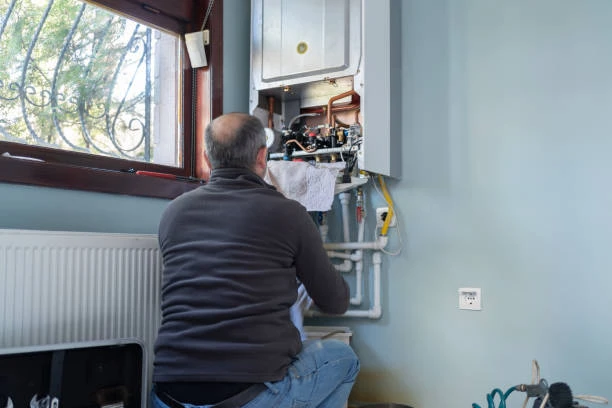
Introduction: Unlocking the Power of Grifos in Modern Industry
In the rapidly advancing world of industrial automation, small yet crucial components like grifos play a vital role in system efficiency, safety, and reliability. These taps or valves, often underestimated, are indispensable in controlling fluid flow across a wide range of industries. This article explores the innovative applications of grifos, highlights their characteristics, provides a buyer’s guide, and explains their integration in automated systems, including smart solutions. Whether you’re sourcing components for a conventional setup or an IoT-enabled environment, understanding grifos will help you make informed decisions.
Frequently Asked Questions (FAQ)
What is a grifo in industrial systems?
A grifo is a type of valve or faucet used to control the flow of liquids or gases in pipelines and systems.How do grifos support automation?
They can be manually operated or integrated with sensors and actuators, allowing for remote or automatic control.What materials are commonly used in grifos?
Materials include brass, stainless steel, and high-grade plastics like PVC and PPR.Are grifos suitable for IoT applications?
Yes. Many grifos are compatible with smart monitoring systems and can be used in IoT-based environments.Where can I buy reliable industrial grifos?
IFNS offers high-quality grifos and related piping solutions designed for both traditional and smart systems.
1. Definition and Key Features of Grifos
Grifos are flow control devices commonly known as taps or faucets. In industrial contexts, they regulate the release of fluids such as water, air, or chemicals. These components are engineered for precision, durability, and adaptability in automated and manual systems alike.
Key Features:
Flow regulation: Accurate control over fluid movement
Material versatility: Available in brass, plastic (like PPR and PVC), and stainless steel
Threaded or push-fit ends: Easy installation across various systems
Durability: Resistance to corrosion, pressure, and temperature
Compatibility: Integration with sensors and automation systems
2. Common Uses and Application Sectors
Grifos are used extensively across a range of industries due to their flexibility and reliability. Here are the key sectors where they are most commonly applied:
Water Treatment Plants: Managing water flow and filtration systems
HVAC Systems: Regulating coolant and water flow in heating and cooling networks
Agricultural Irrigation: Delivering precise water volumes in field systems
Chemical Processing Plants: Safely handling corrosive or sensitive liquids
Food and Beverage Industry: Maintaining hygiene while managing liquid ingredients
Smart Buildings: Integration with IoT for automated water flow control
Their role in industrial automation is expanding as more facilities adopt digital control and remote management systems.
3. Buying Guide: Choosing the Right Grifo
Selecting a grifo for industrial use requires careful consideration. Here are some critical factors to keep in mind:
Material Quality:
Choose the right material depending on the fluid type and operating conditions. For example, brass is ideal for high-pressure applications, while plastic works well in corrosion-sensitive environments.Colour Coding:
Some systems use coloured grifos for quick identification (e.g., red for hot water, blue for cold).Certifications:
Look for certifications like ISO, CE, or NSF to ensure compliance with industry standards.Thread Type and Size:
Make sure the threading matches your system requirements, whether BSP, NPT, or metric.Sensor Compatibility:
If planning for smart control, confirm the grifo can integrate with actuators or sensors.Flow Rate and Pressure Rating:
Ensure the grifo can handle the operational conditions of your system without compromising safety.
4. Installation Tips and Safety Considerations
Proper installation ensures long-term performance and reduces the risk of failure. Follow these best practices:
Inspect Before Installation:
Check for cracks, defects, or debris inside the grifo.Use Correct Tools:
Avoid over-tightening which can damage threads or housing.Seal Joints Properly:
Use PTFE tape or appropriate sealant to prevent leaks.Ensure Alignment:
Align the grifo with the pipeline to avoid unnecessary stress.Test After Setup:
Run a pressure and flow test to confirm functionality before full system integration.Label and Document:
For large systems, label grifos and maintain installation records for future maintenance.
5. Material Comparison: Plastic Grifos vs Other Types
Choosing the right material often depends on the system’s requirements. Here’s a comparison of commonly used materials:
| Feature | Plastic Grifos (PPR/PVC) | Brass Grifos | Stainless Steel Grifos |
|---|---|---|---|
| Corrosion Resistance | Excellent | Good | Excellent |
| Temperature Resistance | Moderate | High | Very High |
| Pressure Tolerance | Moderate | High | Very High |
| Weight | Lightweight | Medium | Heavy |
| Cost | Economical | Moderate | High |
| Application | Water systems, agriculture | HVAC, plumbing | Chemical, food industry |
| Sensor Compatibility | Good with adapters | Very Good | Excellent |
6. Conclusion
Grifos may appear simple, but they are essential components in today’s automated and smart industrial systems. Whether used in traditional piping or integrated into IoT networks, their role in ensuring safe, efficient, and accurate flow control is unmatched. When choosing the right grifo, consider material, compatibility, certifications, and application-specific needs. With a reliable partner like IFNS, you can trust the quality and performance of every component.
7. Contact Us
IFNS – Experts in Piping and Flow Control Solutions
With over 30 years of manufacturing experience, IFNS provides innovative, reliable, and cost-effective solutions for industrial piping systems. Our grifos and valves are ideal for both conventional systems and smart automation.
For more information,pls visit our webside https://ifns.su/
Whatsapp: +86 15088288323
We respond to all emails and faxes within 24 hours. Contact us today to explore how our solutions can support your automation goals.









